Span 48 cm / 19 in
Weight 28 g / 0.9 oz
The idea leading to this model was to test a flying wing design with as little ballast as possible. This could only be achieved by making the tail section as light as possible. Thus the fin-and-rudder section was hollowed out and covered with thin Japan tissue.
Name: The rufous Hornero is a bird from eastern South America also known by the name red ovenbird. It is the national bird of Argentina.
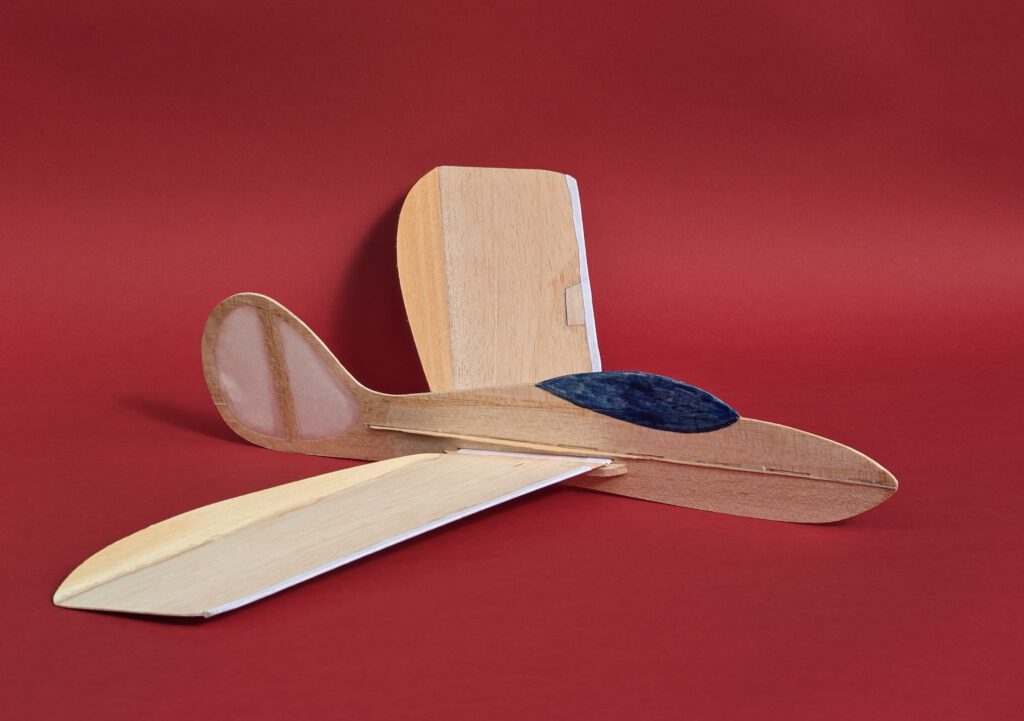

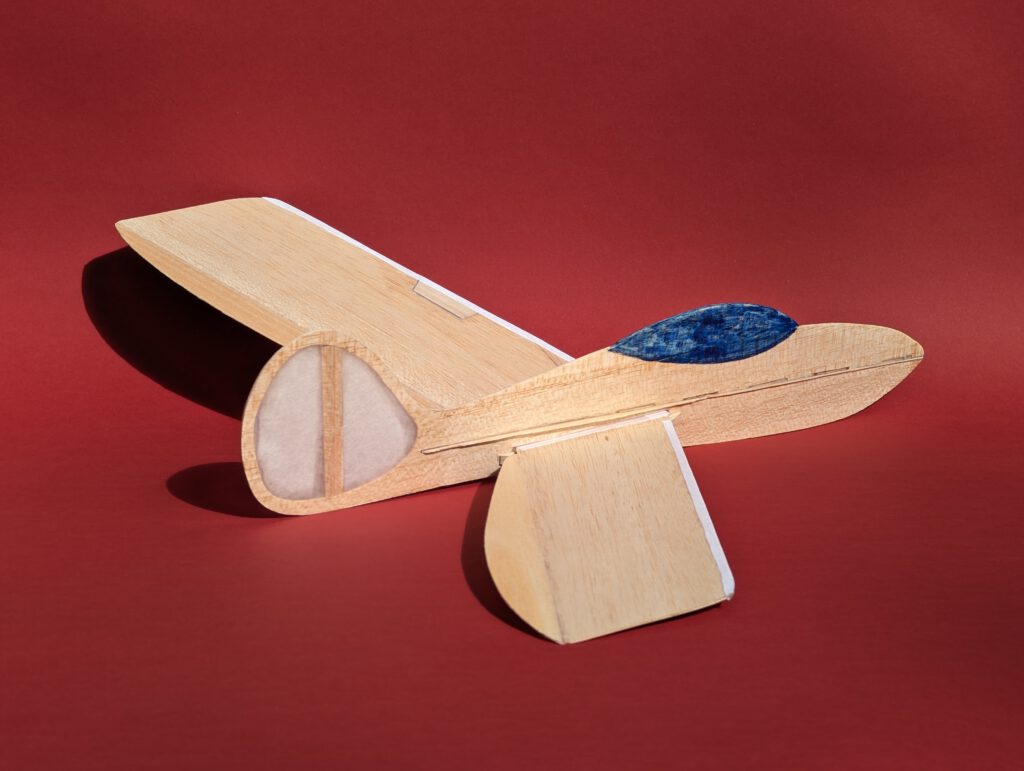
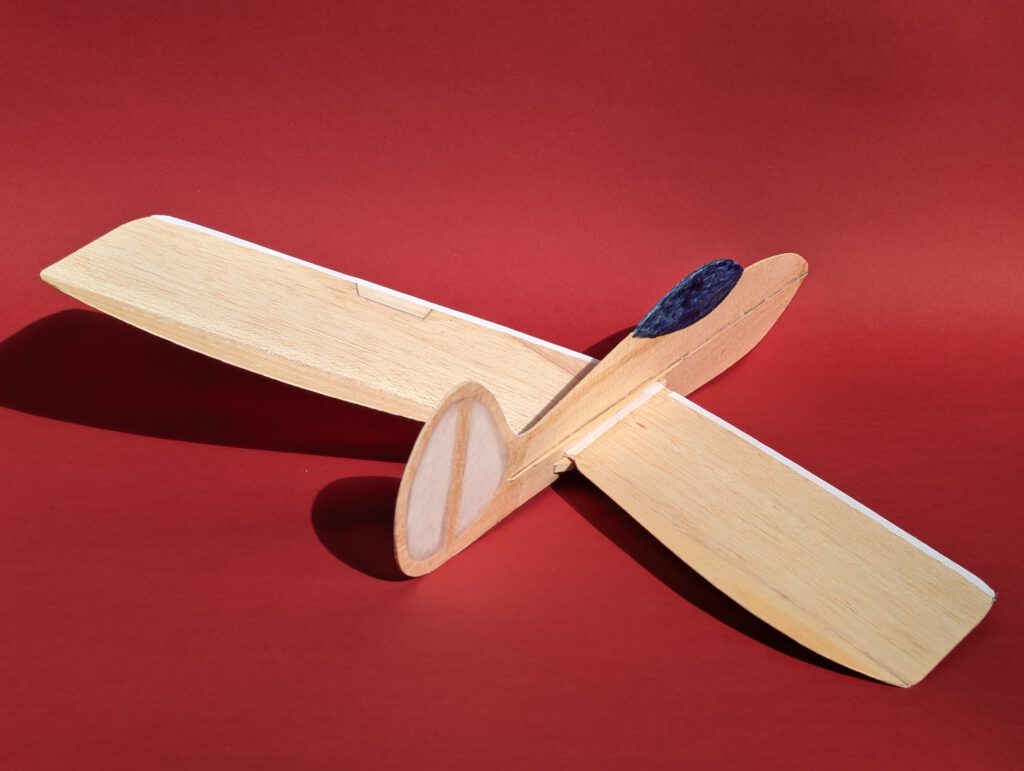
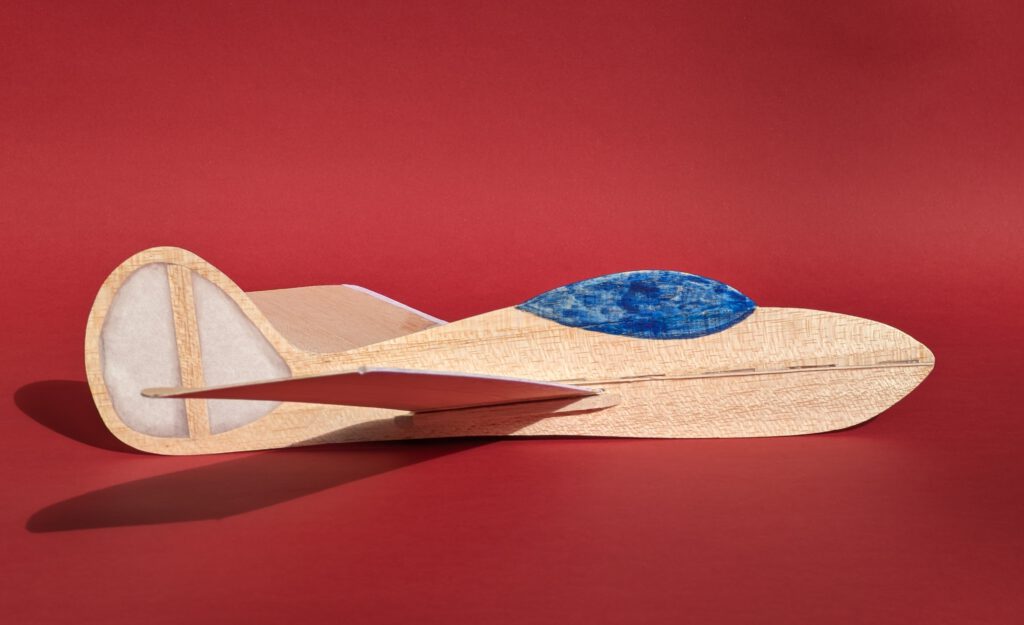
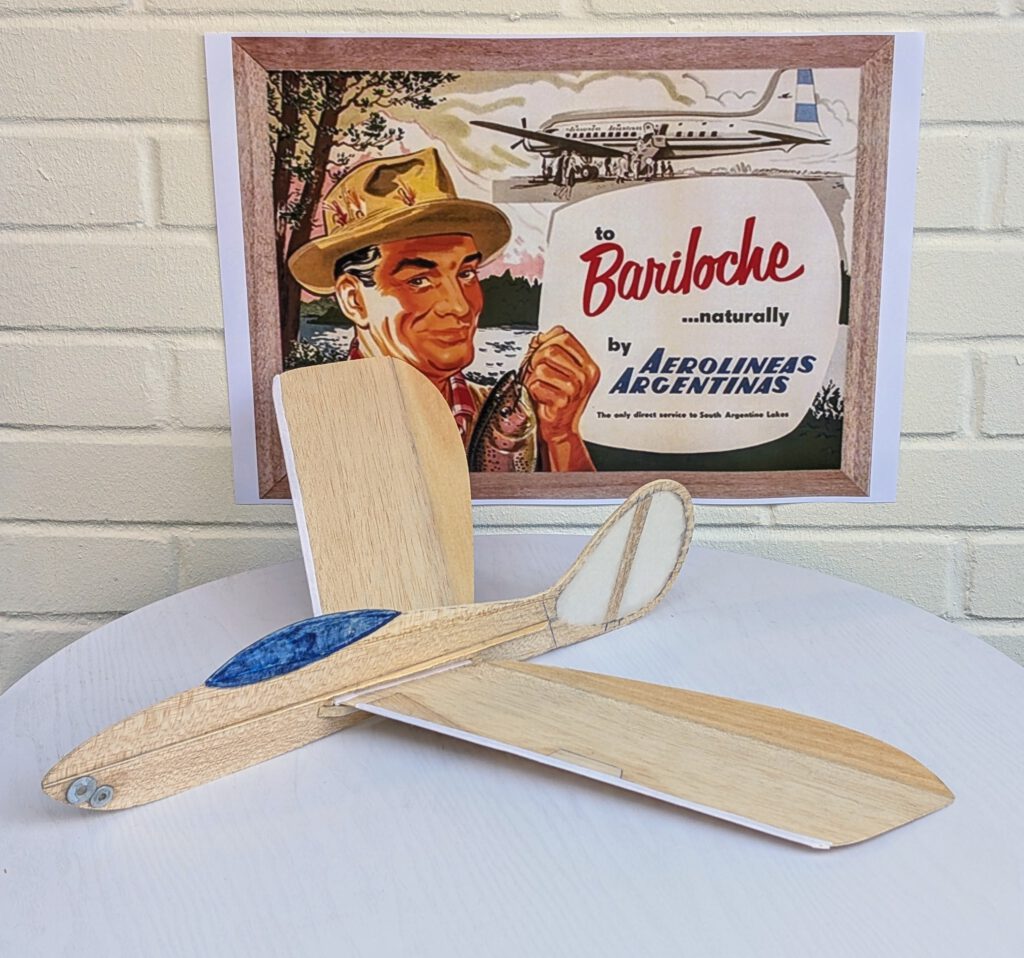
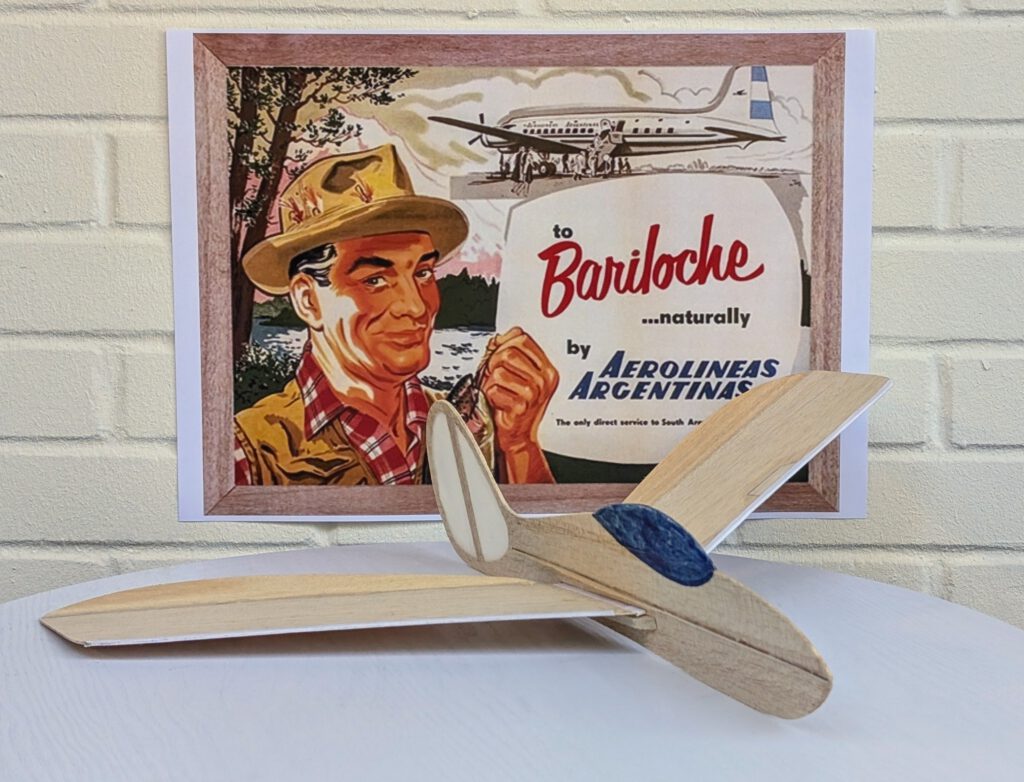
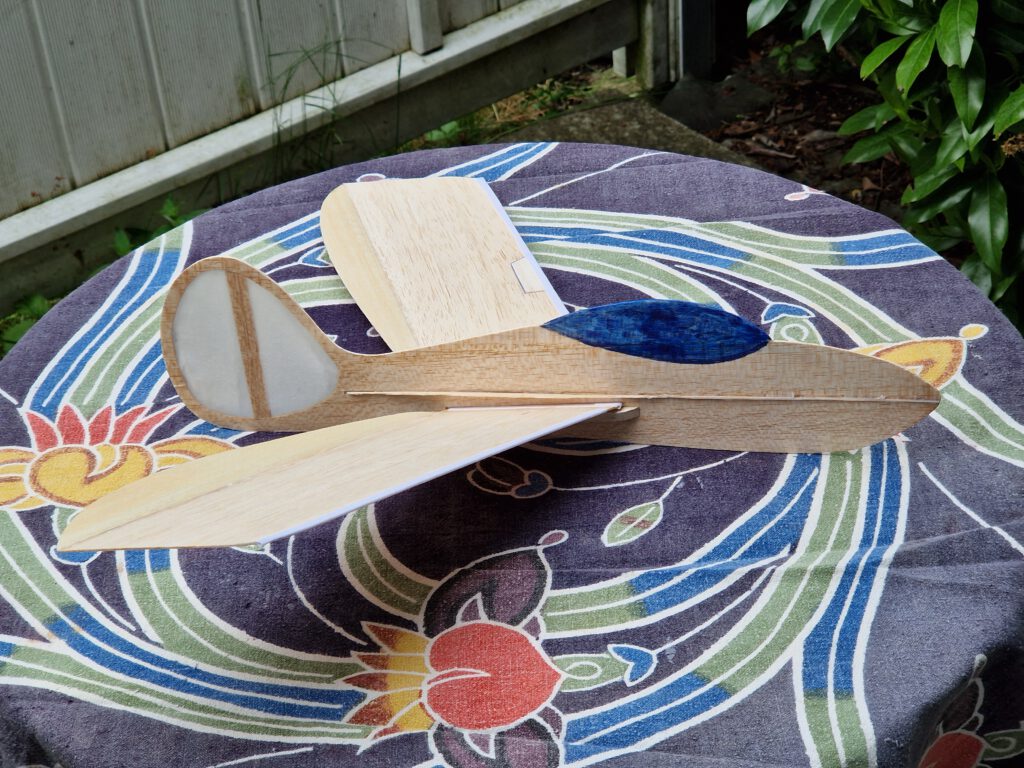
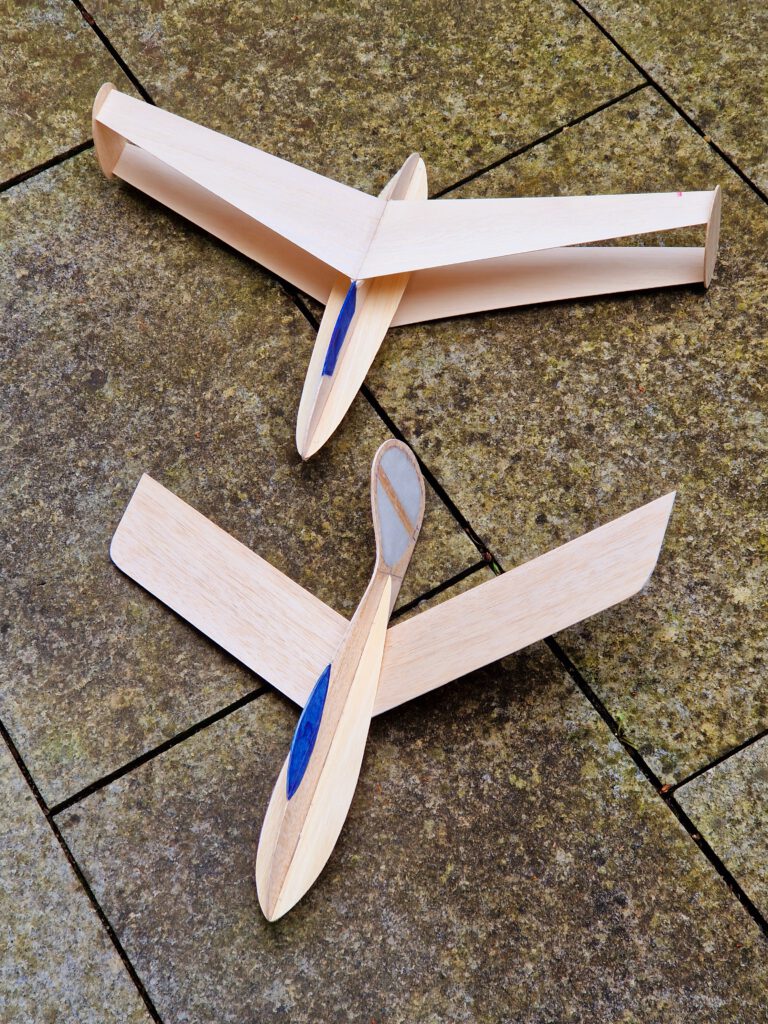
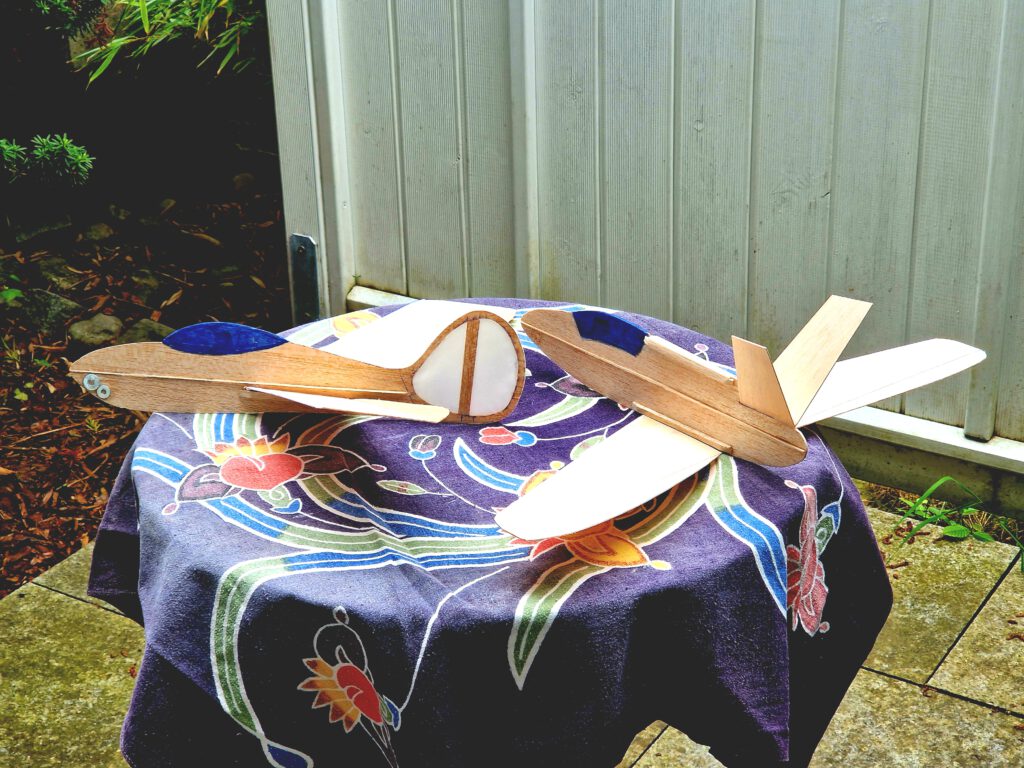
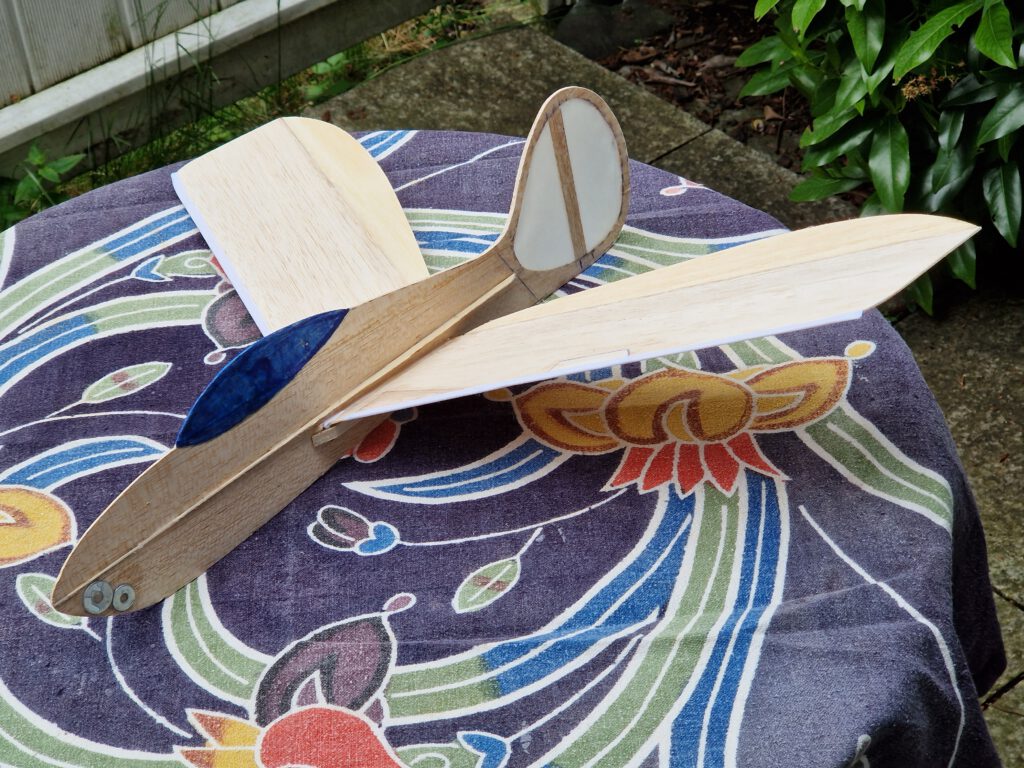
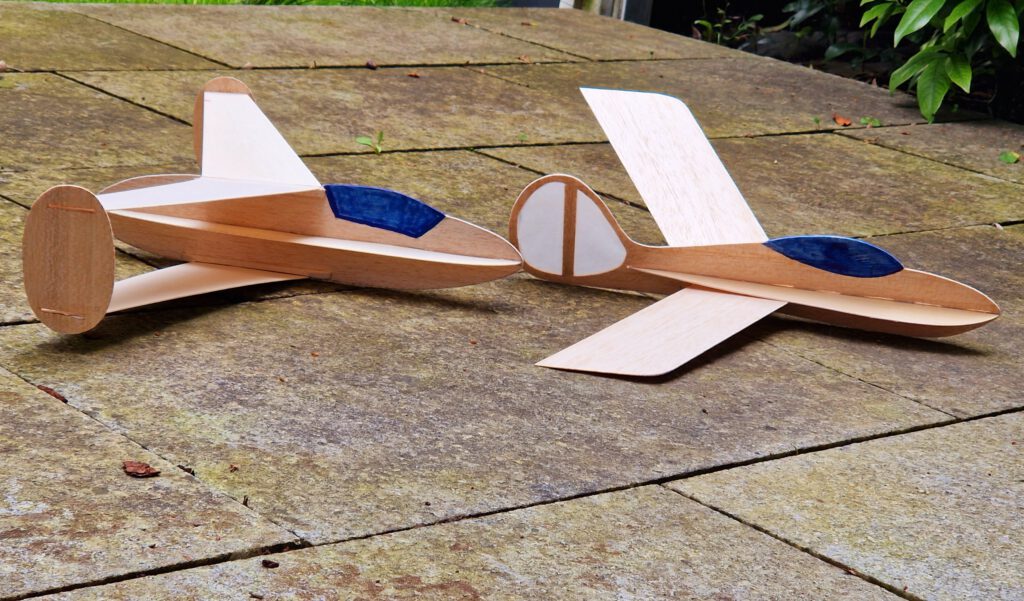
Building the tailless balsa sheet chuck glider El Hornero.
Materials:
Fuselage: B 3; wings: B 1 or B 1.5; wing supports: B strips 5 x 5; elevons: B 1; fin: is part of fuselage plus Japan tissue; linen/cotton band width 12 mm / ½ in; ballast: small piece of lead or scrap metal.
Assembly:
Cut out all balsa parts. Make slot for wing. Cut out fin area. Sand well. Transfer outlines of canopy from paper to wood with pen (photo).
Fuselage:
Fix fuselage with needles on your building board. Cement balsa strip in center of the fin-cutout and let dry (photo). Cut out a piece of Japan tissue a bit oversized and cement it with white wood glue in its place (photos) on both sides.
Prototype had fuselage side stiffeners (photo) but these can as well be omitted. Cement wing support strips on right side. Use clamps or clothespin and let dry (photo). Repeat procedure on left side.
Wings:
Fix one wing half on building board with needles. Underlay tip of other wing half according to given dihedral and cement. Linen tape should be used to strengthen joining area on top and bottom. Let dry. Strengthen leading edge of wing with linen band. The latter can either embrace the leading edge in form of the letter U or be cemented flat on the underside following the shape of the leading edge.
Final Assembly:
Fix one wing half on your building board so that it lays flat on board and so that fuselage and other wing half have no contact to building board (hanging freely). Do it on a table for example. Position and cement elevon just as shown on plan using needles to hold in place. Let dry. Repeat procedure with other wing half.
Balance model in accordance to given CG on plan.
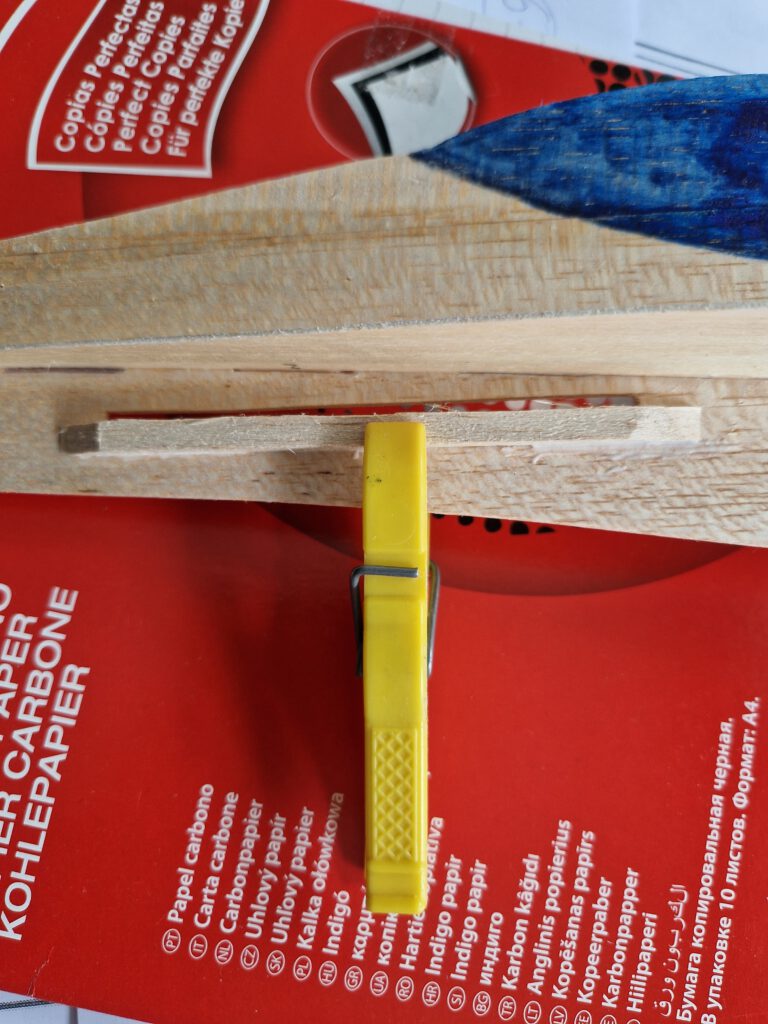
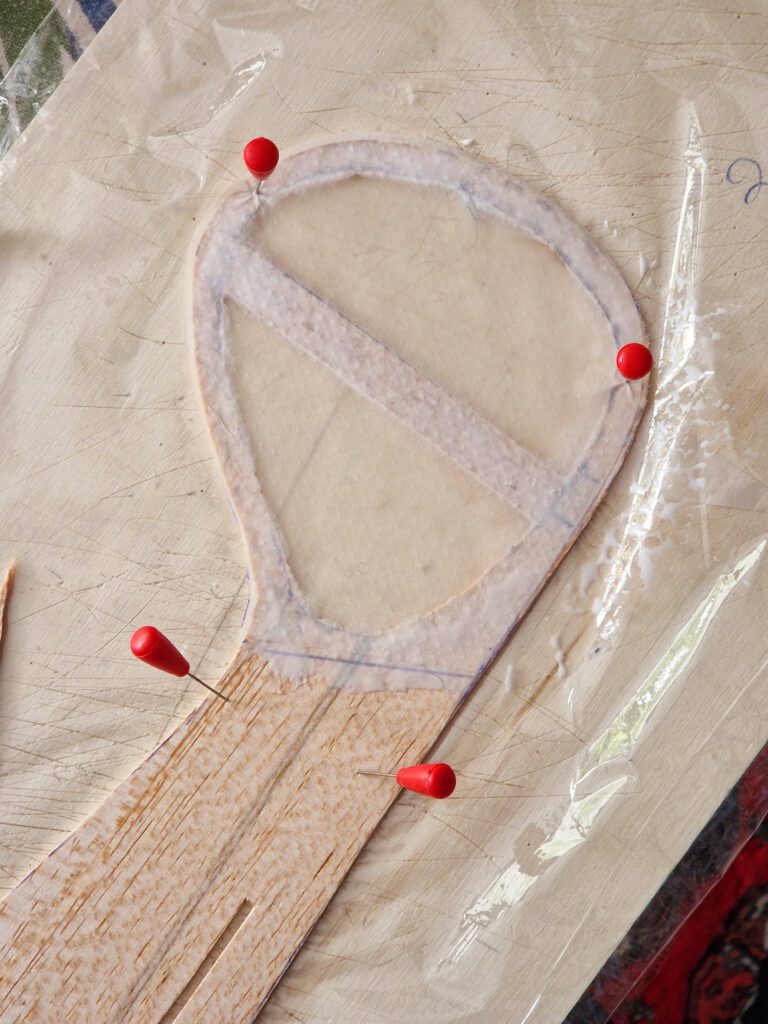
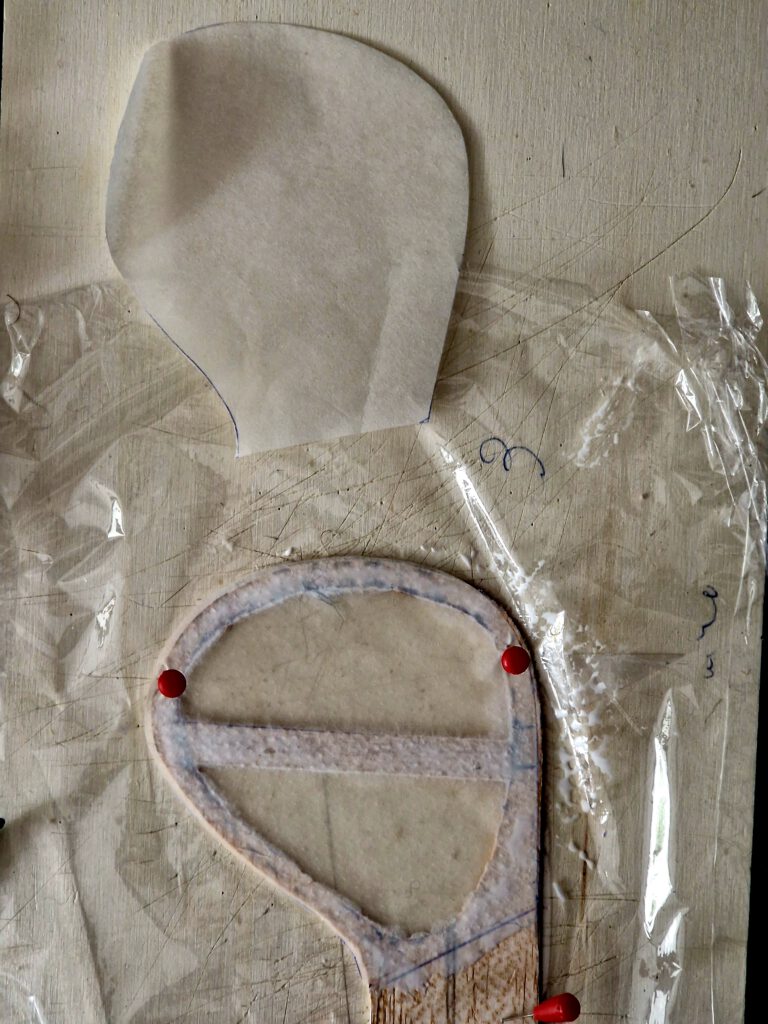
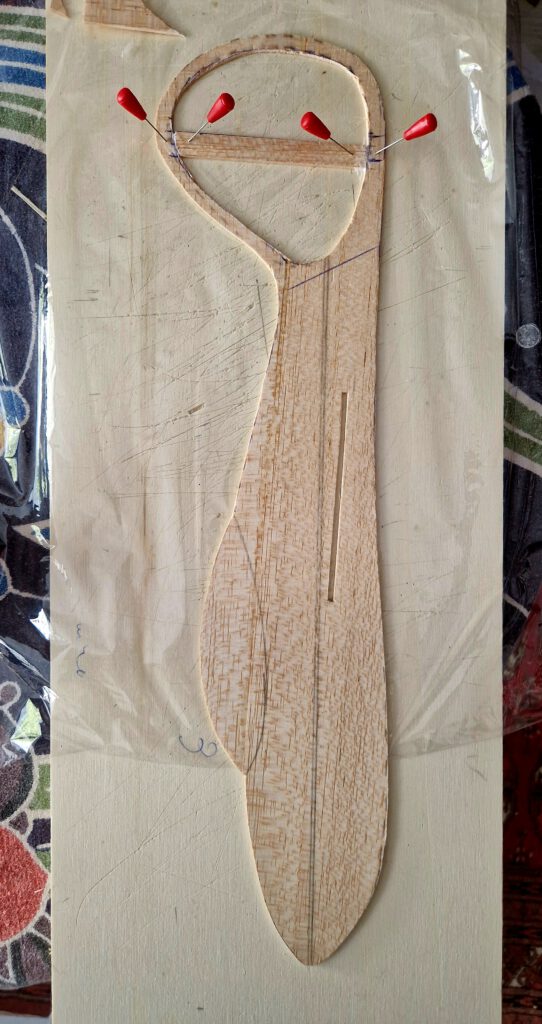
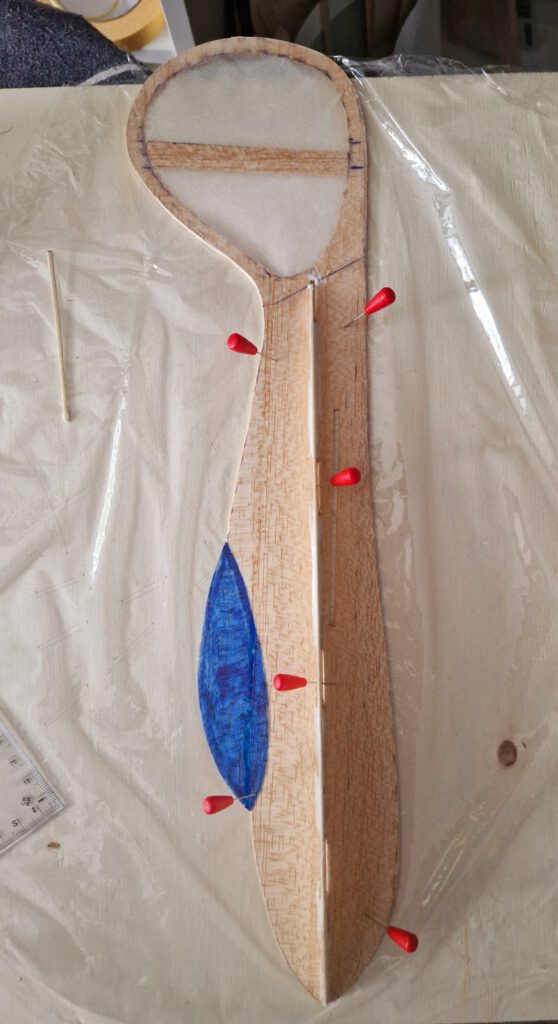
Buon volo! (passez des vols agréables !)
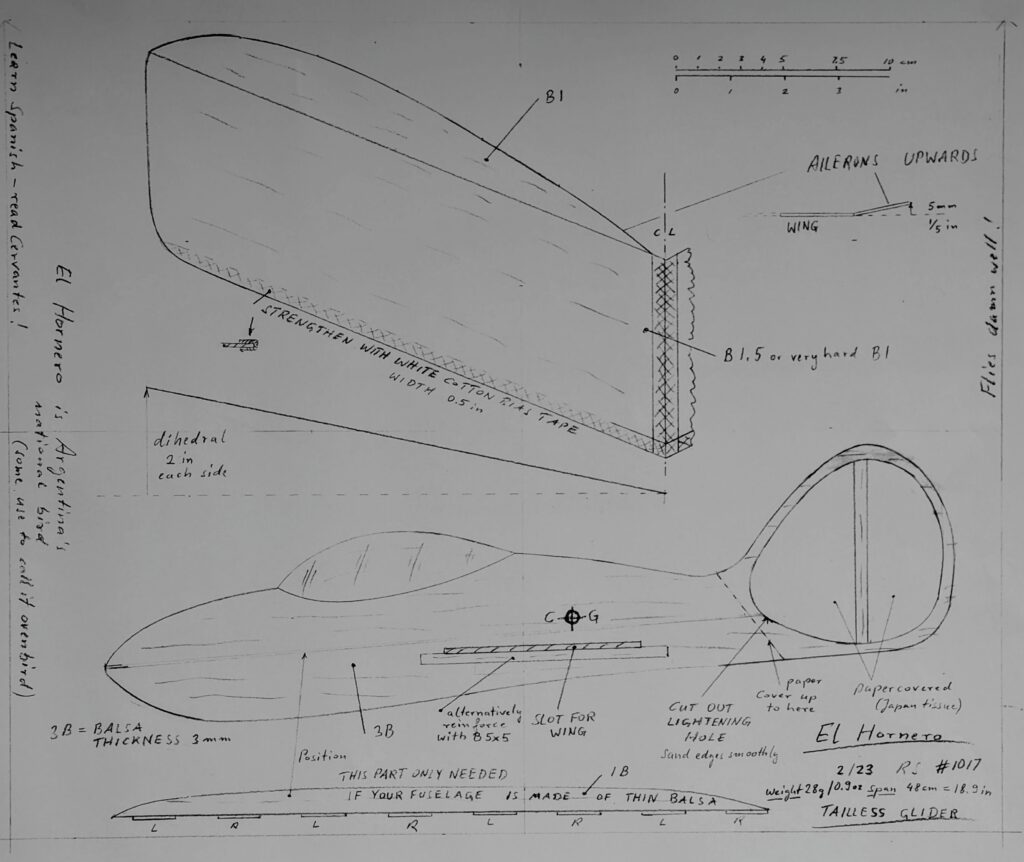
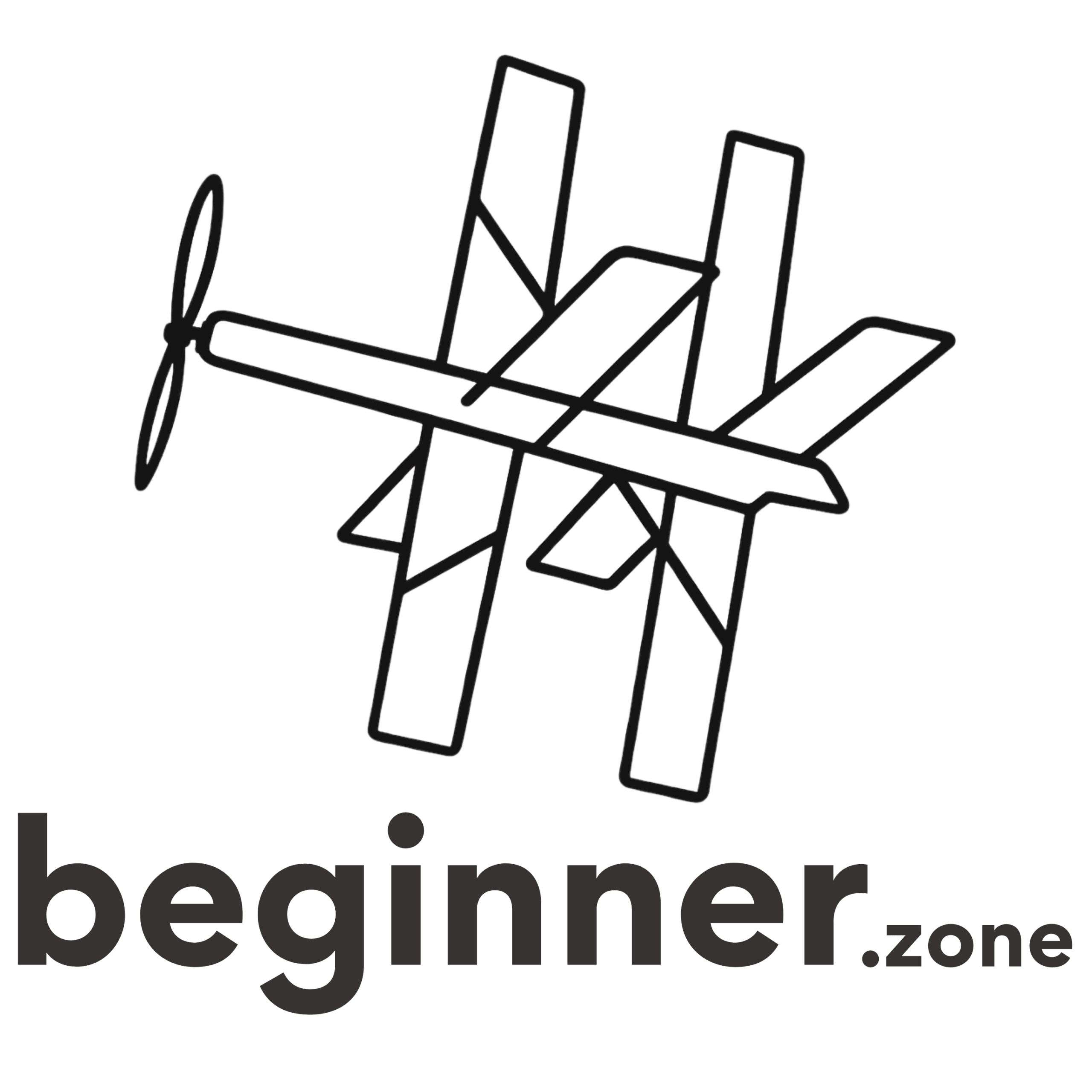
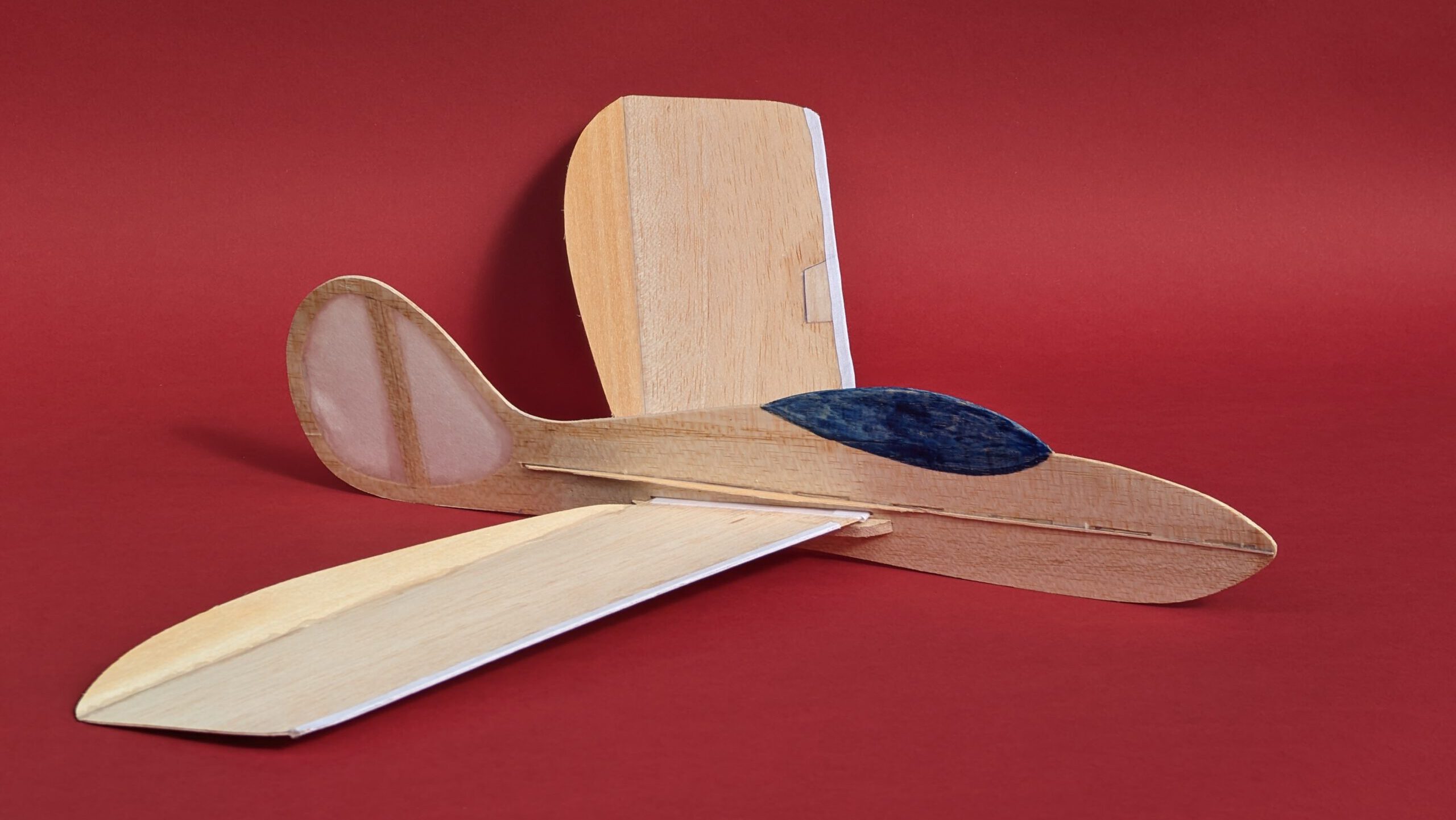
Leave a Reply